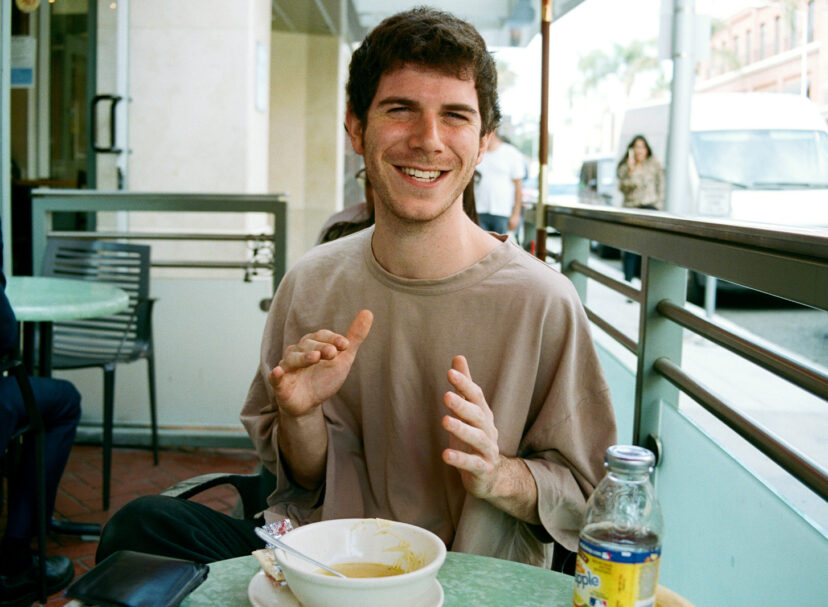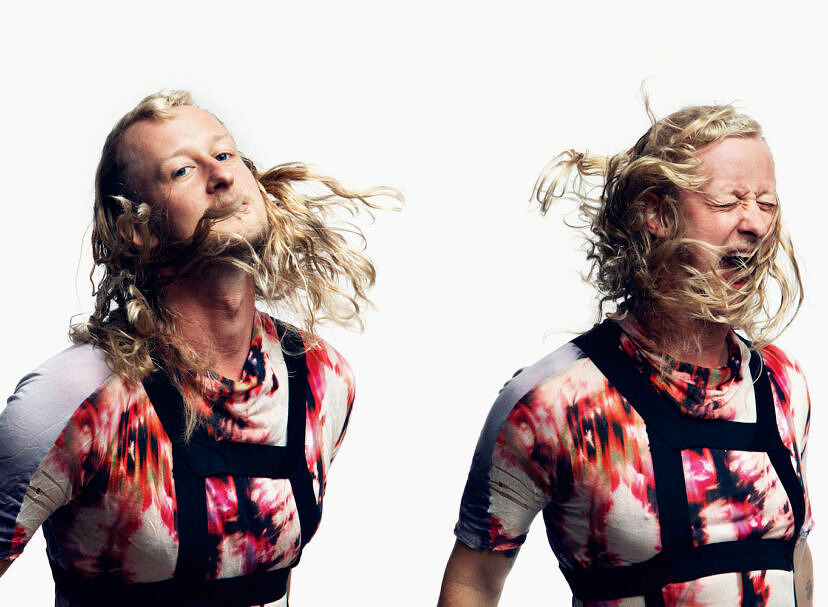Interview: Alec Coiro
Photo: Jonangelo Molinari for Civil Music
Video: Miko Revereza
As Billa Bronx — aka Bennett Kuhn — defines it, Jungle music is “less a genre than it is an ethos and an ethics, a pace, an intensity, a set of habits and habitats.” To that I would just add, it a genre where you know it when you hear it (unless you’ve gotten it confused with drum and bass — but that’s a topic for another time). I may not have heard it in New York, or at least heard it done right, since the heady days of Concrete Jungle back in the day. As with any genre the key is transcending it and the best way to accomplish that is to root your music with a deep emotional investment. This is the core of Kuhn’s approach as he explains it to us.
Regarding the video we’re premiering, Kuhn has offered us an intro of his own, which is more insightful than anything I could concoct, so I’ll leave the rest to him (our Interview follows).
“I met Miko Revereza through Matthewdavid in L.A. in early 2012. I sent Miko three unreleased music projects, and we almost aligned then on the prospect of a Billa Bronx video, but my health suddenly deteriorated, and I was psychiatrized and diagnosed with type-II bipolar disorder. Last year, I released Billa Bronx in order to out my psychiatric history and step into a more intentional role as a mad-identifying artist, teacher, and organizer with roots in Astro Nautico and the Creative Resilience Collective, a Philly-based design and health justice group.
Outing myself was directly influenced by Miko. Instead of paying the U.S. government to renew his DACA in 2016, Miko put the money he had saved toward an MFA at Bard. He critically outed his status as a so-called ‘undocumented’ ‘illegal’ ‘dreamer’ in order to make the needs of his community widely legible. When I reached out to Miko for the first time in five years last year, it was in order to commission a video for ‘Alone In The Dark’ that would support Miko’s ongoing fundraising effort to finance his graduate education. Please contribute to this campaign and share it far and wide.
Listening to “Alone in the Dark” took me back while also giving me a taste of the future. How do you walk the line between working in a genre that’s now a generation old, and breaking new ground?
Like hip-hop or punk, I think jungle is less a genre than it is an ethos and an ethics, a pace, an intensity, a set of habits and habitats: an interconnected web of very concrete memories and aspirations embodied in dusty London record bins, shuttered pirate radio stations, living and non-living human bodies, and past-future speculations about cyborg posthumanity. My work with jungle was not really ‘about jungle.’ I gave Billa Bronx practically dangerous amounts of very personal energy. Through him, I used jungle like a ceremonial mask to dance out a work of grief, recording the pain of losing my dad to fate (ALS) as well as the hope of growing through my loss and designing something ecstatically, cathartically, and rebelliously regenerative. It was healing in the extreme.
You’re part of the Astro Nautico collective. How would your characterize the collective’s artistic identity?
Astro Nautico is the artist-led record label curated by Paul Jones, Sam O.B., and myself (Bennett Kuhn) with home offices in New York and Philadelphia. We three have been getting into musical trouble since high school in our hometown of Huntington, Long Island. These days, we work like a little micro-collective, circulating sounds, politics, and aesthetics intensely closely between the three of us and building consensus on core curation. That work interfaces with the efforts of the wide ring of artists — mentors, peers, and students — located hyperlocally and transnationally in the Astro Nautico community, both online and IRL. As a community we release recorded music, teach electronic music classes, promote live events, and host a regular radio show on The Lot Radio. The activities feed back to shape the leadership roles that Sam, Paul, and I play. Everything co-evolves with everything. We intend Astro Nautico to be a platform for promoting music that can soundtrack responsible cultural movements today and tomorrow, building unity in and across lines of difference.
You generally avoid modern laptop-driven techniques in the creation of your music. Can you tell us about what was behind this choice?
Most of my work is actually laptop-centered (i.e., Kuhn, The I Rise Project). Billa Bronx was a 180, a creative turn born of necessity. Back in ’11, my laptop had a broken motherboard and had to spend four weeks away for repairs. Those days I was producing music an hour a day, so the thought of a month of silence was shattering. I set myself to building an alternative musical habitat, assembling a hardware setup in the basement of my parents’ home on Long Island (un/incidentally, this was the same room that my deceased father had used for two decades as his fine art studio). I generated both Billa Bronx and the lesser known moniker Felix Castenzio here with the same setup. The two projects occupy very different soundworlds. It always amazes me that they grew up on the same tape sides.


Back in ’11, my laptop had a broken motherboard and had to spend four weeks away for repairs. Those days I was producing music an hour a day, so the thought of a month of silence was shattering. I set myself to building an alternative musical habitat…

As a follow-up, can you tell us about gear that you use and how you go about collecting it?
The centerpiece for all signal routing was a Mackie 1202 mixer inherited from my dead father’s dead friend. All breakbeat editing happened live using my deceased father’s touch screen computer. (Grief, inheritance, and belonging were all at play in the conceptual gear of the music.) When Dad died of bulbar-onset ALS in 2009, he left behind a PC that he had barely used. It was designed to assist him with communication once he lost the ability to speak. For Billa Bronx, I requisitioned the unused prosthesis and downloaded a piece of drum machine software I’d first encountered on my earliest journeys with electronic music: HammerHead Rhythm Station (1999). As a middle schooler I used to borrow (or steal depending on whom you ask) my mom’s work laptop and jam on HammerHead for hours together together with the 303 emulator TS-404.exe. For Billa Bronx, I channeled my inner 12-year-old, running the outs of my dad’s voice box into the Mackie, layering breakbeat patterns with HammerHead’s rudimentary step sequencer. A Boss RC-50 served as a hardware looper, live sequencer, and sub-mixer; a Casio CZ-101 made all synthesized sounds (Must see 1984 ad: “They’re rocket launchers!”); and a multi-effects pedal provided basic reverb and delay sends. The mains went straight into a Denon cassette deck. Its input was left to peak in the red, soliciting damage. The process was intoxicating, late night, and manually synchronized. Everything was recorded in one mad take. No gods, no (MIDI) masters.
From your perspective, how does the video connect to the track thematically?
Thematically, this track is fractured and teetering on the verge of collapse. Remember that when I made ‘Alone In The Dark.’ I was sitting solo in a basement shrouded in grief pushing buttons on my dead father’s machine voice box late at night. I was naively stepping into a manic depressive haze. Miko responded to these themes using anachronistic digital materials, conjuring a collapsing, fragmented, evolving, troubled architectural space for the melancholy and dread of the music. Here are some words he sent me in October: ”Basically, I was trying to construct an industrial district. I explored Long Island on Google Streetview. Maybe the same places your dad would paint, maybe not. I made these 3D models in SketchUp and used a really old MS Paint textures for bricks and windows. When I would lay multiple layers of MS Paint textures and animate them on Sketch-Up, they would rapidly flash back and forth between the layers of images. A happy accident. I animated navigating through this constructed industrial district. Different versions of buildings and movement. I put that through a video synthesizer that scrambles and adds a layer of feedback to the image. That was my process… It actually was one of the most involved videos I ever worked on.”



